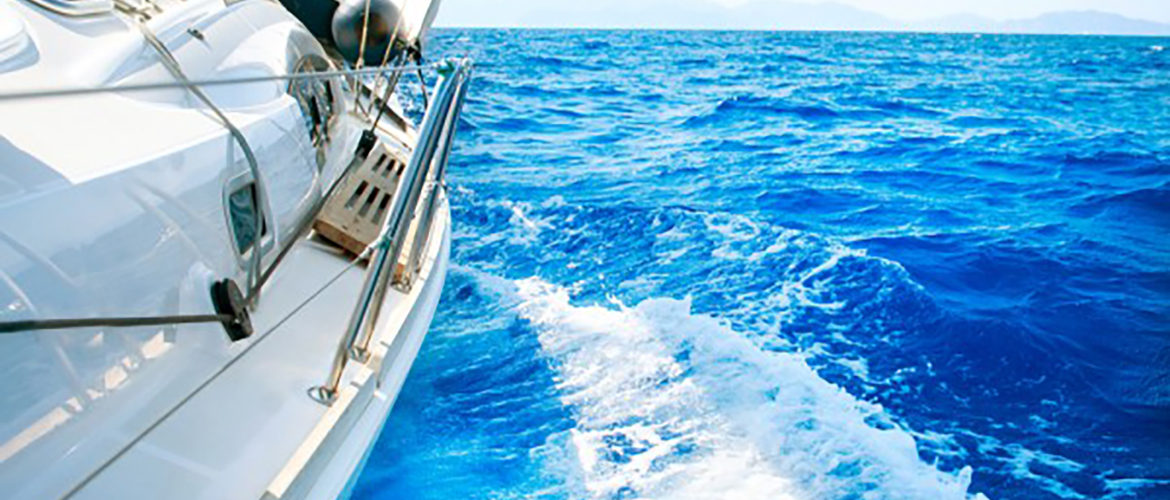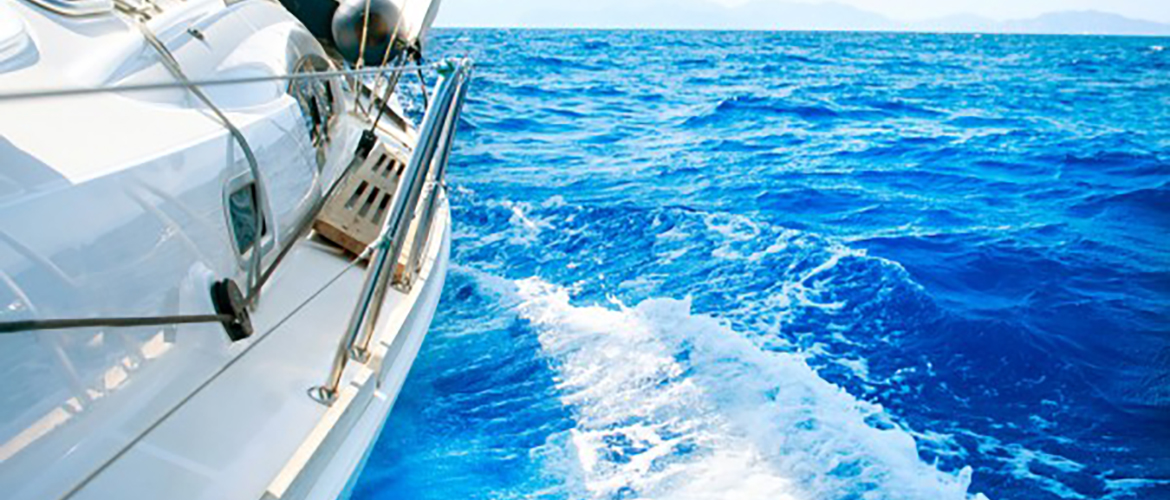America’s Cup Primer, Part II

By Tim Mosso
The second installment of 300Magazine’s guide to America’s Cup yacht racing examines the history of the event, its greatest competitors, and the evolution of its racing sailboats. The first America’s Cup race would not be identified as such until decades after the fact. On August 22, 1851, the Boston-built schooner yacht America defeated 15 vessels from the Royal Yacht Squadron during an open-entry fleet race around Britain’s Isle of Wight.
The American vessel finished eighteen minutes ahead of her first pursuer, giving rise to an apocryphal but entertaining anecdote. Spectating sovereign Queen Victoria is said to have inquired, “Who finished second?” The mythical but amusing answer, to the effect of, “Your Majesty, there is no second,” became an immortal article of Cup lore. Consider it sailing’s version of Babe Ruth’s “called shot.” The America had been constructed expressly for the purpose of winning this race. Hitherto, the annual event had no established name, but it was sufficiently prestigious that a sterling silver cup of considerable value had been commissioned as a winner’s trophy. That initial regatta established a number of Cup traditions that endure to this day. Sponsored by the New York Yacht Club (the first challenger), a consortium of owners (the first syndicate) commissioned a racing schooner specifically for the cup. Virtually all America’s Cup vessels since America have been constructed specifically to compete in the America’s Cup. Six years after winning the cup, the owners donated it to the NYYC under the terms of the Deed of Gift, which specified that the cup would be subject to challenges in perpetuity. The NYYC declared the cup to be the “America’s Cup” in honor of its first victor. Between the first America’s Cup in 1851 and the most recent 34th edition of 2013, the cup races have become a regular competitive stage for the richest and most powerful sportsmen of modern times. At a time when baseball players earned so little that they worked off-season manual labor, Gilded Age industrial barons such as J.P. Morgan and William Vanderbilt expended fortunes to defend the Cup on the biggest stage in all of sport. The golden age of America’s Cup racing occurred during the first three decades of the 20th century. Starting in 1899, Britain’s Sir Thomas Lipton, inventor of the modern four-sided tea bag, sponsored five consecutive challenges over 31 years to recapture the Cup. Each effort was parried and repulsed by the defenders of the NYYC. For his (futile) efforts, Lipton was acknowledged by the NYYC with a special golden cup proclaiming him the “world’s best loser.” Lipton accepted the award with self-effacing good humor. Ironically, the grandest vessels ever to contest the America’s Cup emerged during the three challenges of the Great Depression era. The J-Class yachts, which remain the largest in Cup history, measured substantially longer than 100 feet, and weighed substantially more than 100 tons. The era also witnessed a changing of the guard among syndicate owners that reflected the economic shift toward new technologies. Following his final challenge in 1930, Lipton ceded the mantle of Britain’s champion to Sir T.O.M. Sopwith, an aerospace-engineering pioneer and creator of the Sopwith Camel biplane of World War I fame. Sopwith’s state-of-the-art Endeavor came closer than any challenger in history to recovering the cup for Britain. Pitted against Harold Vanderbilt’s syndicate, Endeavor pushed the contest to six rounds before falling 4-2. While this may be old news to devotees of regatta, those who also collect vintage watches may be surprised to learn that the story is old watch news as well. Endeavor’s vanquisher is immortalized on the case back of Zenith’s iconic 02.0480.400 chronograph. The triumphant vessel’s name, Rainbow, is the source of the Zenith’s famous nickname. World War II forced the longest interregnum between America’s Cup challenges in the event’s history. Europe had been devastated by the war, and even wealthy Britons were unwilling to sponsor contenders under the elaborate J-Class formula. The NYYC altered the Deed of Gift for the first time since 1887 in order to encourage a new challenge. The club introduced the 12-meter class, an enduring formula whose reasonable construction costs and thrilling competition potential allowed it to remain the Cup standard from 1958 to 1980. The first defending boat under the 12-meter rules, Columbia, was helmed by American sports-car builder, racer, and LeMans challenger Briggs Cunningham. However, subsequent editions of the America’s Cup drew participants whose fame, fortune, and geographic distribution reflected the changing complexion of worldwide wealth. During the 1960s and 1970s, the sport began to witness regular participation by mass-media empire-builders, such as Australian Sir Frank Packer, and American Ted Turner. Packer’s arrival also heralded an antipodean shift in the origin of the challengers. From Packer’s first Challenge in 1962, to the latest races of 2013, Australian and New Zealander yacht clubs have acted as challenger or defender fourteen times. Although the precise dates of the 2017 Cup have yet to be fixed, it is known that the Hamilton Island Yacht Club of Australia will add a fifteenth syndicate to this distinguished tradition. Close readers will have noticed in the foregoing text that the southern hemisphere has sponsored both challengers and defenders since 1962. Indeed, it was an Australian team that finally ended the NYYC’s 132-year run of successful defenses in 1983. Since that game-changing moment, the America’s Cup has assumed an increasingly international character. Italian and Swiss yacht clubs have challenged and defended. The Louis Vuitton Cup qualifying races have been staged on both hemispheres and both sides of the equator in order to build global interest in the sport. Internationalization of the America’s Cup comes as no surprise to followers of luxury-watch news. The participation of Swiss-watch manufacturers has grown in parallel with the nation’s participation in the cup. Given Switzerland’s landlocked status, it is remarkable to note that the Swiss have acted as challenger once and defender twice since 2003. The current decade has been a period of dramatic change for the sport. Headlines in technology news, luxury-watch news, and sporting news blur together as corporate sponsors, Silicon Valley leaders, and premium product manufacturers scramble to secure their participation in the Cup. Since 2003, the rising power in the sport has been the Oracle syndicate of Larry Ellison, founder and CEO of Oracle Corporation. Under the sporting sponsorship of the Golden Gate Yacht Club, Oracle rose from the ashes of the failed America One syndicate of 2000. Since that first step, Oracle has added super-premium sponsors as varied as BMW, TAG-Heuer, and PUMA sportswear. Success followed. In 2010, Ellison’s crew challenged and defeated the Swiss Defender Alinghi 5 of the Societé Nautique de Geneve. In 2013’s 34th America’s Cup, Oracle’s blisteringly quick Oracle Team USA-17 wing-sail hydrofoil successfully defended the America’s Cup against the Aotearoa of Emirates Team New Zealand. Sailing at speeds of up to fifty miles per hour, USA-17 secured the Cup in one of the longest, closest, and hardest-fought America’s Cup regattas of all time. Relive the action of the 34th America’s Cup, discover the speed and technology of modern America’s Cup hydrofoils, and look ahead to the 2017 America’s Cup in the third and final installment of 300Magazine’s America’s Cup Primer.

